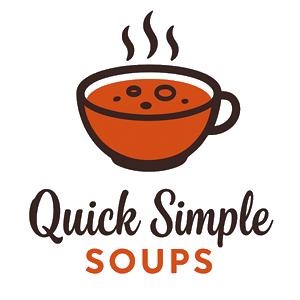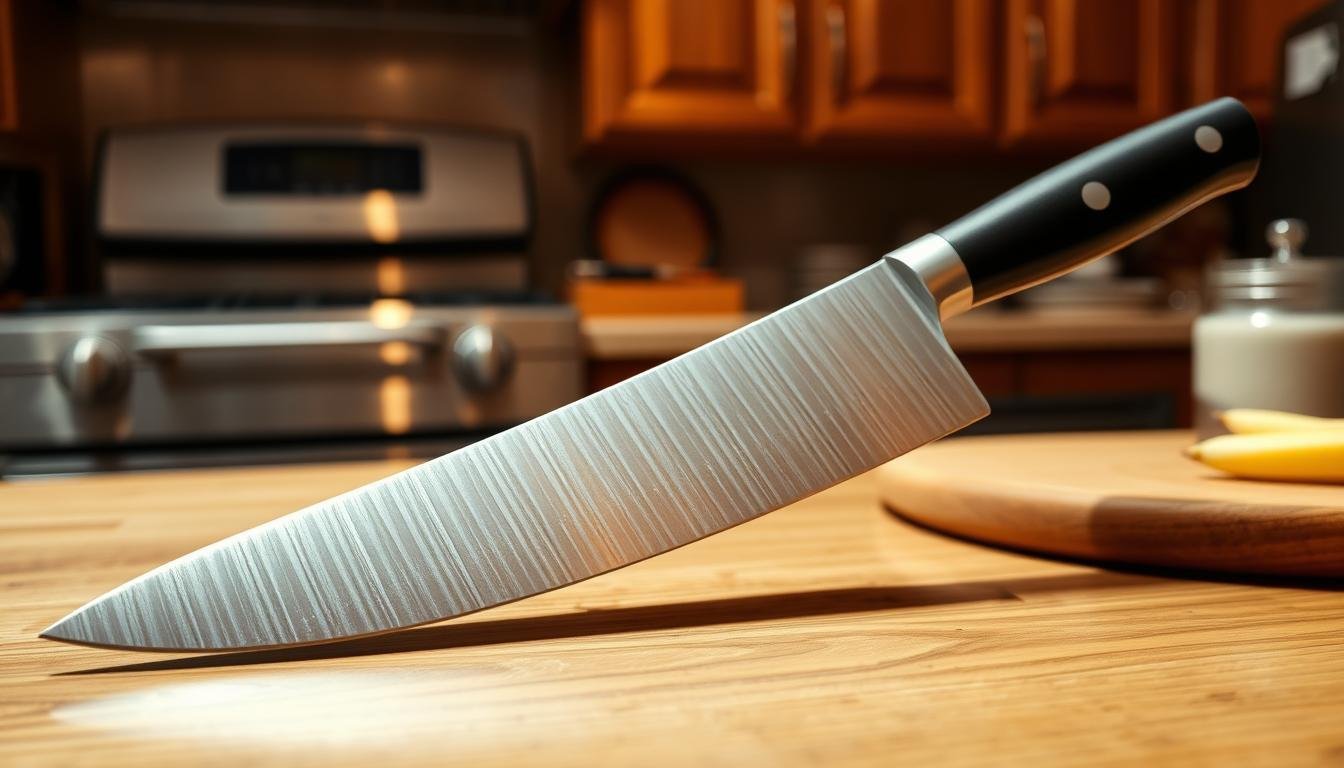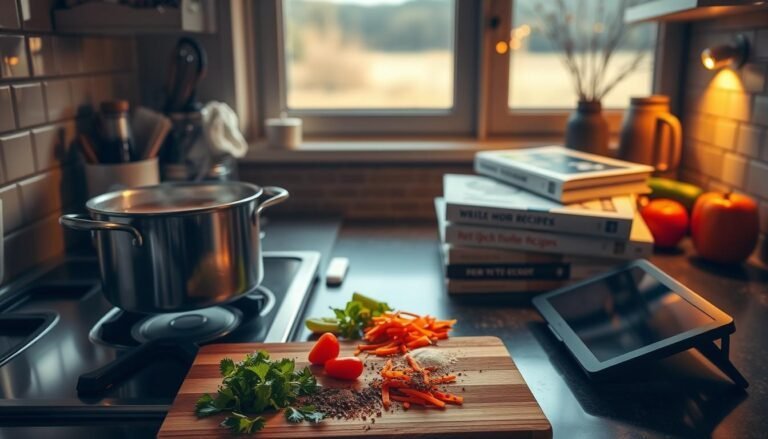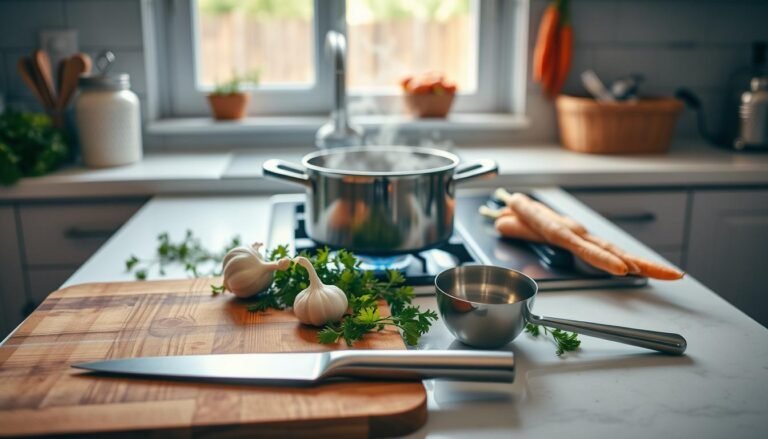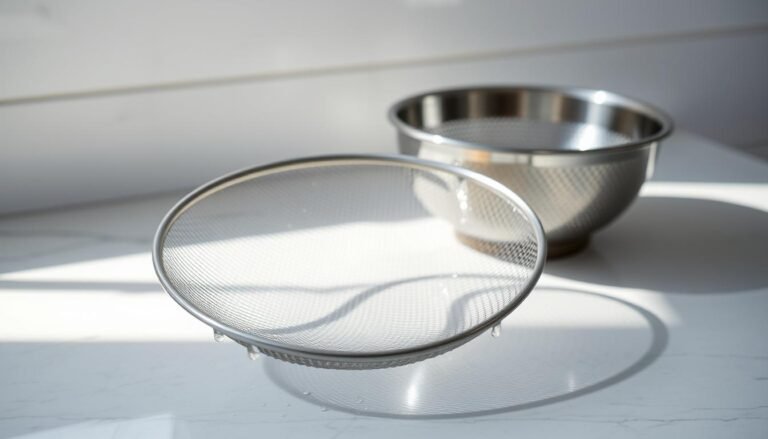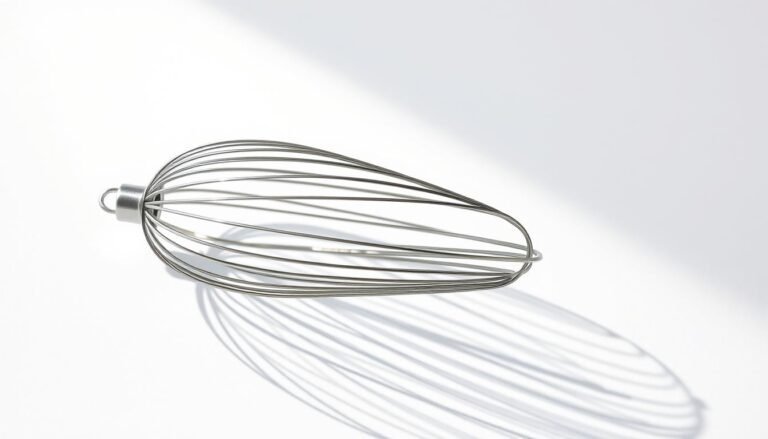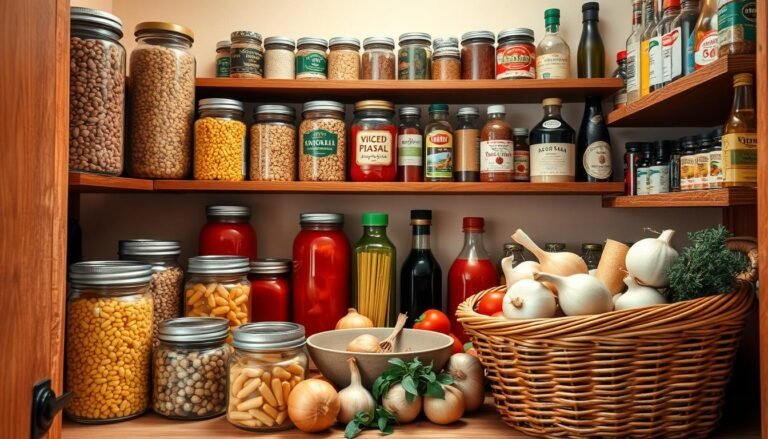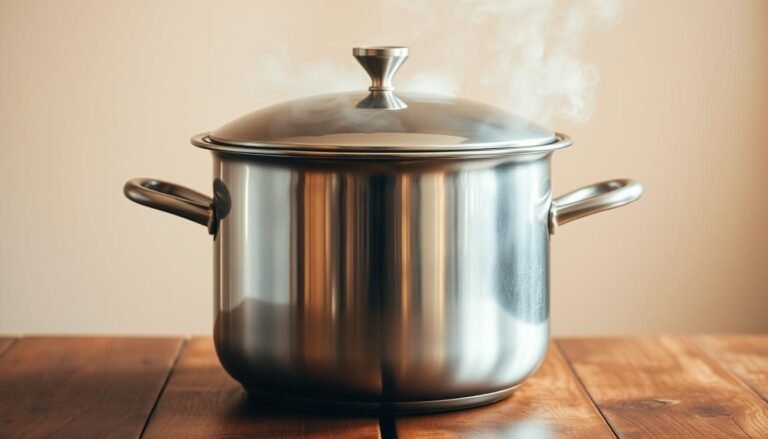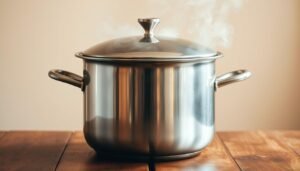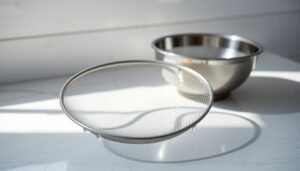Disclosure: This Post Contains Affiliate Links; We earn a commission on purchases.
A high-quality Chef’s Knife is more than just a tool. It’s the backbone of every kitchen. It makes meal prep faster, easier, and more enjoyable.
For home cooks, the right kitchen knife is key. It makes chopping, slicing, and mincing easier. This means you can prepare meals more efficiently.
Investing in a quality Chef’s Knife is vital for better cooking skills. It’s not just about the tool. It’s how it makes cooking better overall.
Key Takeaways
- A quality Chef’s Knife is essential for efficient meal preparation.
- It simplifies various kitchen tasks, such as chopping and slicing.
- Investing in a good kitchen knife enhances the overall cooking experience.
- A Chef’s Knife is a fundamental tool for home cooks.
- It makes cooking faster, easier, and more enjoyable.
The Versatility of a Chef’s Knife in Everyday Cooking
A top-notch professional chef knife is a kitchen superstar. It can do many things. Whether you’re a pro chef or just love to cook, a good chef’s knife is key.
This knife is your go-to for chopping, mincing, and dicing. It’s great for cutting meat, chopping nuts, and smashing garlic. Its ability to do many tasks makes it a must-have for daily cooking.
Common Cutting Tasks a Chef’s Knife Excels At
A best chef’s knife is great for several tasks. It’s perfect for:
- Chopping veggies and herbs with accuracy
- Mincing for sauces and marinades
- Dicing meat and veggies for dishes
- Slicing cooked meats and roasts
Using one knife for these tasks can make cooking faster and more efficient.
How One Knife Can Replace Multiple Specialized Tools
Getting a top professional chef knife can mean fewer knives in your kitchen. It’s a big plus for home cooks. With one good knife, you can:
- Clear up your kitchen by needing fewer knives
- Streamline your cooking with one knife for all tasks
- Become better at using a chef’s knife
For more on kitchen tools, including the best chef’s knives, check our recommended products page.
Key Features That Define a Quality Chef’s Knife
A top-notch chef’s knife is key in any kitchen. Its features greatly affect how well it works. Whether you cook at home or professionally, knowing what makes a knife great is vital.
Blade Materials and Their Impact on Performance
The blade’s material is very important. High-carbon stainless steel is popular because it’s tough and doesn’t rust easily. This keeps the knife in good shape, even after lots of use and cleaning.
Other materials, like ceramic or titanium, have their own perks. They might be sharper or lighter. But, they might need more care.
Think about how you cook most often when picking a knife. For tough tasks, choose a strong material. For finer work, a lighter one might be better.
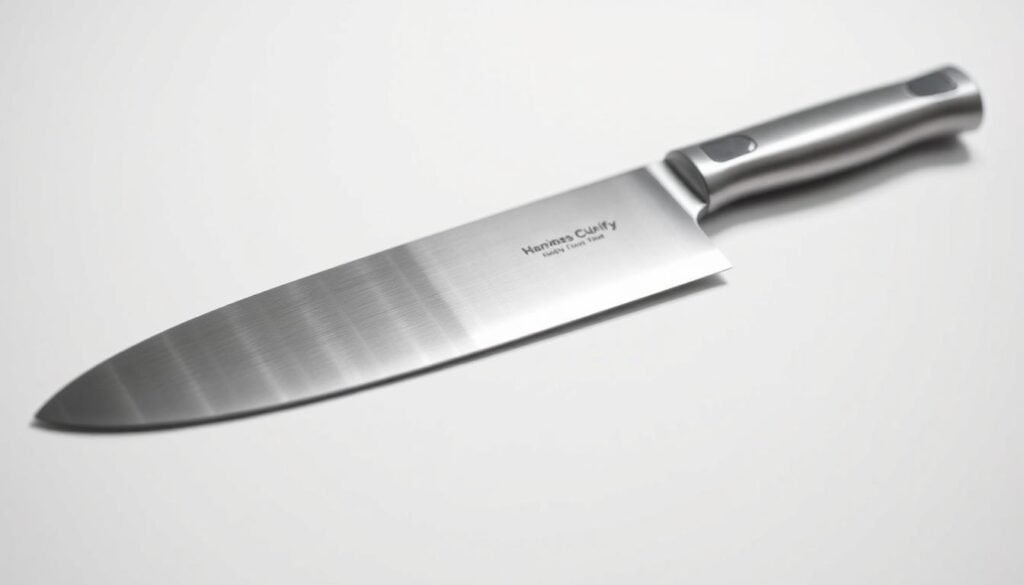
Handle Design and Ergonomics
The handle of a chef’s knife is as important as the blade. A good handle makes the knife comfortable and safe to use. Look for handles that are easy to hold, like textured plastic or ergonomic wood.
- Ergonomic design for comfortable grip
- Material that provides a secure hold
- Balance between the blade and handle
A well-made handle can make cooking easier. It helps prevent tiredness and improves control.
Balance and Weight Distribution
The balance of a chef’s knife is how evenly the weight is spread. A balanced knife feels right in your hand and is easier to use for a long time. The knife’s weight is also important; a heavier knife can be more powerful but might get tiring.
Try holding different knives to see how they feel. A knife that feels balanced and right in your hand will make cooking better.
How a Professional Chef’s Knife Improves Your Cooking Experience
The right chef’s knife can change how you cook, making it better and more fun. A sharp chef’s knife is key, giving you the precision and control you need for many tasks.
Precision and Control in Food Preparation
A top chef’s knife gives you clean, precise cuts. This makes your ingredients look and taste better. It’s all about balance and sharpness, making it easy to cut through food.
For example, a top-rated chef’s knife is great for chopping herbs or slicing meat. It cuts smoothly, needing less pressure and reducing accidents. Learn more about why a good chef’s knife is essential in our article 10 Reasons a High-Quality Chef’s Knife is a Kitchen.
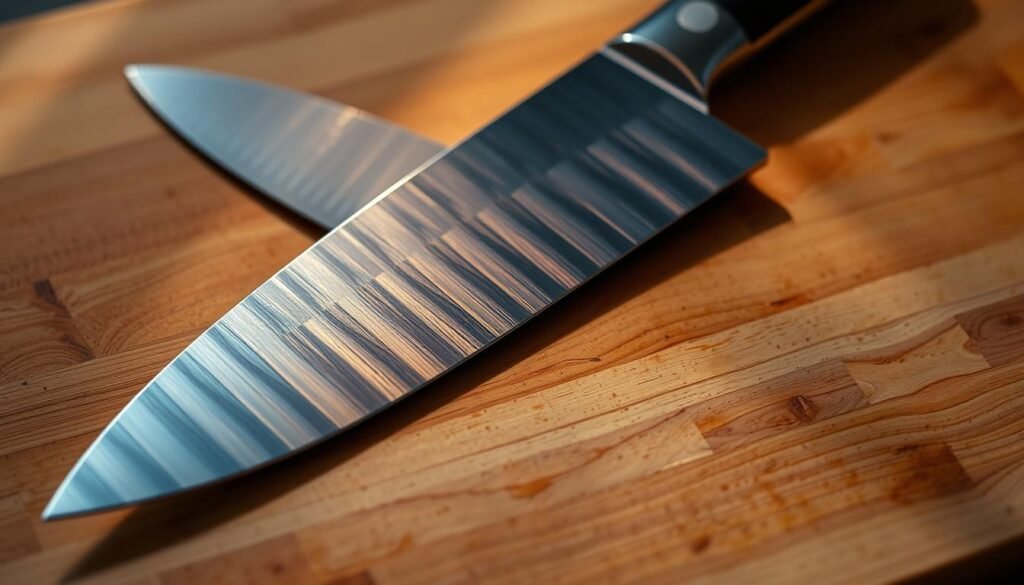
Time-Saving Benefits in Meal Preparation
Using a professional chef’s knife saves time in cooking. A sharp, balanced knife lets you prep faster, giving you more time for cooking and presentation. This is great for busy home cooks who want to make delicious meals.
- A sharp knife needs less effort, keeping you from getting tired while cooking.
- Accurate cuts help ingredients cook evenly, which can cut down cooking time.
- Being more efficient makes cooking more fun and less stressful.
Selecting the Right Chef’s Knife for Your Kitchen
The right chef’s knife can make cooking better. It’s not just about the brand or price. It’s about how well it fits your cooking style and needs.
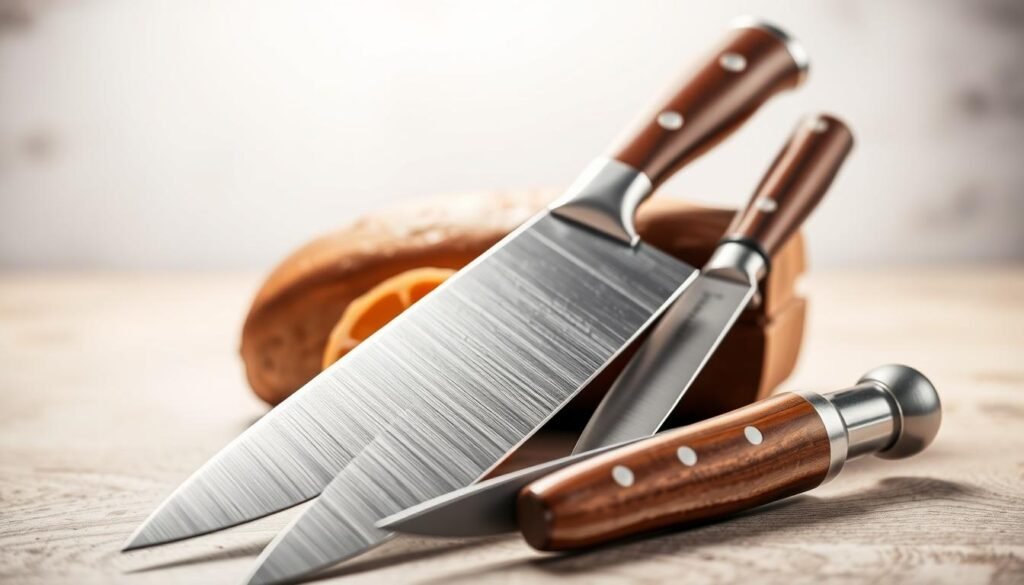
Western vs. Japanese Style Chef’s Knives
There are mainly two styles of chef’s knives: Western and Japanese. Western knives are tough and heavy. They’re great for chopping bones and thick veggies. Japanese knives are light and sharp. They’re perfect for precise cuts and delicate work.
Choose based on your cooking habits. If you chop meat a lot, a Western knife is better. For precise work, like slicing fish, go for Japanese.
Budget Considerations and Value for Money
Buying a professional chef knife can cost from a few dozen to hundreds of dollars. It’s tempting to choose the cheapest. But think about the long-term value. A good knife lasts years with care, making it worth the extra cost.
- Look at the material: High-carbon stainless steel is durable and doesn’t rust.
- Handle comfort and safety: A comfy, ergonomic handle helps avoid fatigue.
- Balance: A balanced knife cuts better and more precisely.
Size and Weight Recommendations for Different Users
The size and weight of a chef’s knife matter for comfort and effectiveness. Knives are usually 6 to 12 inches long. An 8-inch knife is versatile for most tasks. The weight should be just right, not too heavy or too light.
Recommendations vary for different users:
– Beginners: A lighter, smaller knife (6-8 inches) is easier to handle.
– Experienced cooks: An 8-inch knife is versatile.
– Professional chefs: They might prefer larger or heavier knives for their specialty.
Conclusion: Investing in Your Culinary Future
Getting a good set of knives is key for serious cooks, pros or home chefs. A top-notch chef knife is vital. It makes cooking safer, more efficient, and fun. Choosing the best chef’s knife boosts your cooking joy.
A quality chef’s knife gives you precision and control. This makes cooking quicker and more fun. It’s a versatile tool that can replace many specialized knives, adding value to your kitchen.
When picking a chef’s knife, look at the blade material, handle, and balance. A high-quality chef’s knife is an investment in your cooking future. It lets you cook with confidence and precision.
FAQ
What makes a chef’s knife high quality?
Can a single chef’s knife really replace multiple specialized knives?
What is the difference between a Western-style and a Japanese-style chef’s knife?
How do I choose the right size of chef’s knife for my needs?
What are the benefits of using a sharp chef’s knife?
How do I maintain my stainless steel chef’s knife?
Are top-rated chef’s knives worth the investment?

Ryan Conlon is the comfort food fan behind QuickSimpleSoups.com, where he shares easy soup ideas, smart shortcuts, and helpful tips for busy home cooks. Ryan believes a good bowl of soup doesn’t need to be complicated—and he’s here to prove it. Whether you’re looking for quick weeknight meals or cozy classics with a twist, Ryan’s simple approach helps you serve up satisfying soups with minimal effort.
Subscribe to Our Newsletter
